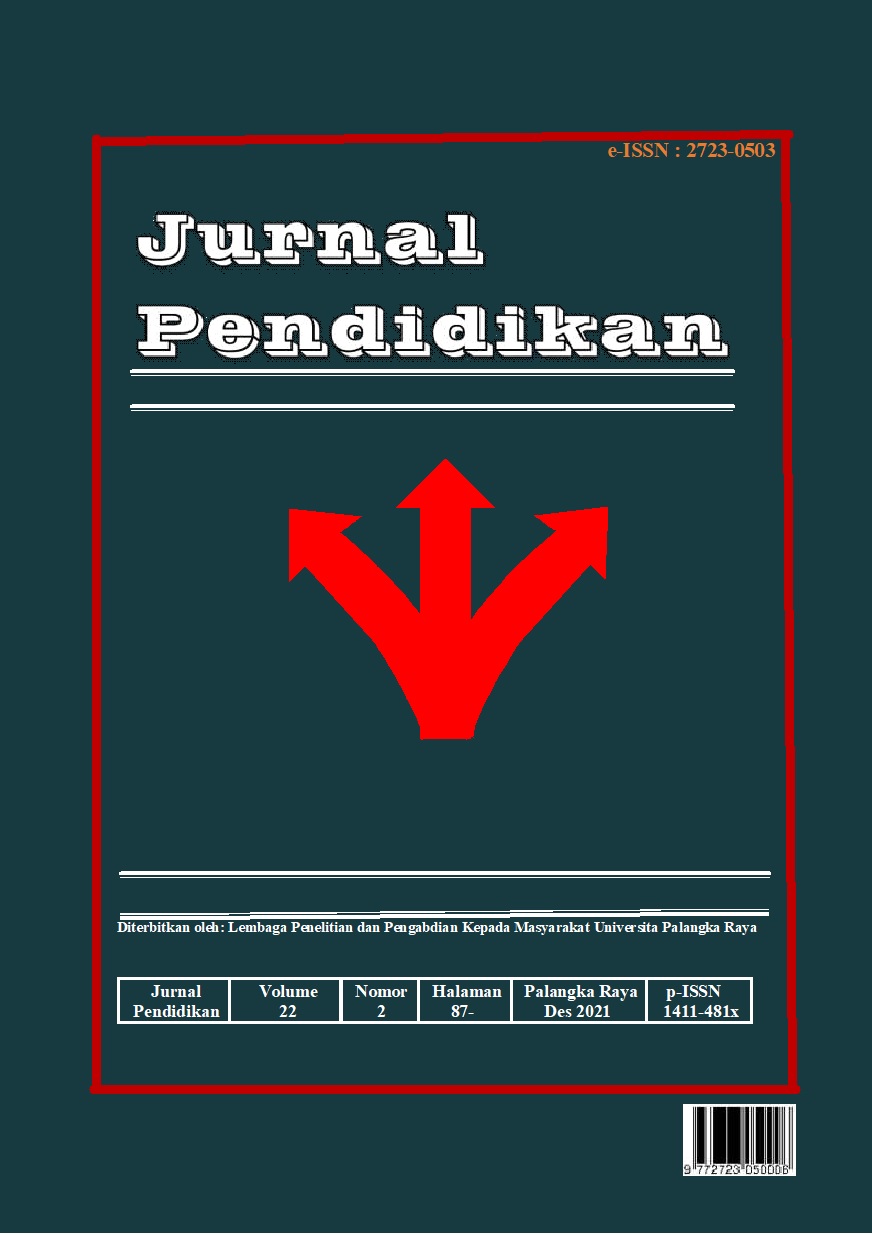I IMPLEMENTASI TEORI VYGOTSKY TERHADAP PERKEMBANGAN BAHASA ANAK USIA DINI
DOI:
https://doi.org/10.52850/jpn.v22i2.3824Kata Kunci:
language development, , early childhood, zone of proximal development and scaffoldingAbstrak
Penelitian ini bertujuan untuk mengetahui perkembangan bahasa pada anak usia dini berdasarkan teori Vygotsky. Jenis penelitian ini adalah bibliografi. Data diperoleh dari riset kepustakaan (library research). Teknik pengumpulan data yang digunakan peneliti ini adalah studi kepustakaan. Teknik analisis data pada penelitian ini dengan menggunakan teknik analisa kualitatif dengan cara deduktif.
Hasil penelitian yang diperoleh bahwa perkembangan kemampuan bahasa anak dapat berkembang baik sangat dipengaruhi oleh lingkungan sekitar dan bantuan dari orang dewasa disekitar anak. ZPD (zone of proximal development) dan scaffolding sangat membantu anak mencapai kemampuan tertingginya hingga anak dapat melakukan sendiri tanpa bantuan orang dewasa disekitarnya. Dampak dari hasil penelitian yaitu rekomendasi untuk guru agar berperan sebagai fasilitator bagi anak dalam belajar, membantu dan memberi dukungan kepada anak ketika dibutuhkan agar anak dapat mencapai perkembangan kemampuan maksimal dari dalam dirinya.
Kata kunci: perkembangan bahasa, anak usia dini, ZPD (zone of proximal development) dan scaffolding
Unduhan
Referensi
Mahabbati, A. 2013. Language and mind menurut vygotsky,aplikasi terhadap pendidikan anak dan kritiknya. Jurnal Pendidikan Edukasia, II.
Chomsky, N. 2006. Language and Mind. In Language and Mind. Cambride, UK: Cambridge University Press. https://doi.org/10.1017/cbo9780511791222
Machali, R. 2009. Pedoman Bagi Penerjemah: Panduan Lengkap Bagi Anda yang Ingin Menjadi Penerjemah Profesional. Bandung: Kaifa.
Paud, G. T. K. 2020. Perkembangan anak usia dini.
Robingatin, & Ulfah, Z. 2019. Perkembangan bahasa anak usia dini (analisis kemampuan bercerita anak).
Sari, R. 2018. Program studi pendidikan islam anak usia dini fakultas tarbiyah dan tadris institut agama islam negeri bengkulu 2018.
Suardipa, I. P. 2020. Social-revolution ala vygotsky dalam konteks pembelajaran. 1.
Utami, I. G. A. L. P. 2016. Teori konstruktivisme dan teori sosiokultural: aplikasi dalam pengajaran bahasa inggris. Prasi, 11(01), 4–11.
Sujiono, Y. N. 2013. Konsep dasar pendidikan anak usia dini (Bambang Sarwiji (ed.); VIII, p. 260). PT Indeks.
Unduhan
Diterbitkan
Cara Mengutip
Terbitan
Bagian
Lisensi
Hak Cipta (c) 2022 Susanti Etnawati

Artikel ini berlisensi Creative Commons Attribution-NonCommercial-NoDerivatives 4.0 International License.





